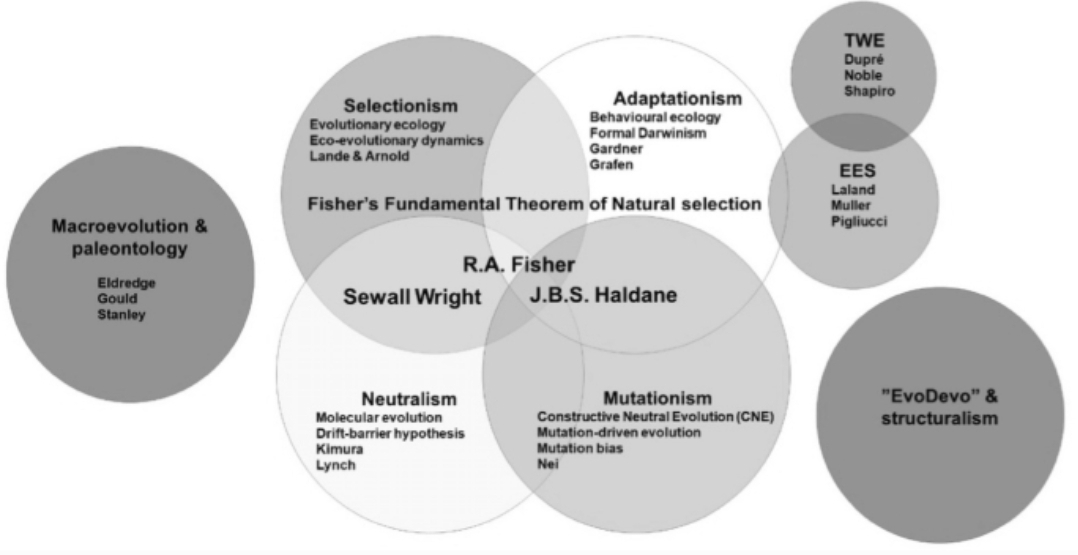A Deep Dive into the Hypothesis: Teleological Evolution through Signaling Pathways
The recently published paper, "A hypothesis of teleological evolution, via endogenous acetylcholine, nitric oxide, and calmodulin pathways", presents a fascinating and controversial proposition. It suggests a mechanism for organisms to influence their own evolution through behavioral choices mediated by specific molecules. This analysis delves deep into the core ideas, strengths, and limitations of the hypothesis.
Unveiling the Proposed Pathway: From Decision to Epigenetic Mark
The central tenet of the hypothesis hinges on a three-molecule cascade:
Acetylcholine (ACh): This neurotransmitter plays a critical role in learning, memory, and movement. The paper proposes that behavioral decisions trigger ACh signaling, setting the stage for the following steps.
Nitric Oxide (NO): This molecule acts as a multifaceted regulator, influencing blood flow, metabolism, and the immune system. The hypothesis suggests that ACh activity induces the production of NO.
Calmodulin: This protein functions as a molecular switch, amplifying the effects of NO. The combined action of NO and calmodulin is hyp
influenced by epigenetic modifications.
Epigenetics refers to heritable changes in gene expression that don't alter the underlying DNA sequence as with evolution. These changes can be passed down to offspring, offering a bridge between behavior and evolution. The hypothesis proposes that NO, influenced by behavior, alters the chemical tags on DNA (acetylation, methylation) and the proteins that package it (histones). These modifications are then transmitted to the next generation, specifically through changes in sperm.
Strengths and Intriguing Possibilities
The hypothesis offers a fresh perspective on evolution, departing from the traditional view of a blind process driven by random mutations and natural selection. Here are some compelling aspects of the proposal:
Bridging Behavior and Evolution: Traditionally, a disconnect exists between behavior and an organism's evolutionary trajectory. This hypothesis proposes a link, suggesting behaviors could influence the course of evolution.
Leveraging Known Molecules: Focusing on well-understood molecules like ACh, NO, and calmodulin provides a solid foundation for further research. These molecules have established roles in biological processes, making them natural candidates for exploring a potential link to evolution.
Epigenetics as a Bridge: Epigenetics offers a mechanism for behavioral choices to leave a lasting mark on the organism's genetic legacy. By influencing how genes are expressed, behavior can impact future generations.
Key Questions and Areas for Further Exploration
Here are some key questions being explored:
Evidence for Behavioral Influence: The paper searches for evidence demonstrating a direct link between behavioral decisions and ACh production.
Specificity of NO: The hypothesis suggests that NO acts as a signal for specific, beneficial epigenetic changes. NO has diverse functions, and understanding how it achieves this targeted effect is critical.
Inheritance Mechanism: The proposed mechanism for transmitting the epigenetic changes through sperm requires further exploration.
Exploring Alternative Explanations and Considerations
Timescale of Change: The hypothesis suggests that behavioral choices can influence evolution. However, the timescale for such changes, particularly through epigenetic inheritance, remains unclear.
Ecological Context Matters: An organism's behavior could be driven by environmental pressures, which then influence NO production and potentially epigenetic changes. Disentangling the influence of behavior from environmental factors is important for a complete understanding.
Conclusion: A Catalyst for New Frontiers in Evolutionary Biology
"A hypothesis of teleological evolution" offers a thought-provoking exploration of a potential link between behavior and evolution. While further research is necessary to address the questions raised above, the proposed pathway holds the potential to stimulate new avenues of investigation in evolutionary biology. By combining studies of behavior, neurochemistry, and epigenetics, scientists can gain a deeper understanding of how organisms interact with their environment and potentially influence their own evolutionary destiny. This hypothesis, even in its infancy, serves as a stepping stone towards a more comprehensive understanding of the complex interplay between behavior, the environment, and the evolutionary process.
How the Extended Evolutionary Synthesis (EES) challenges the Modern Synthesis
The concepts of this paper falls under the field of the Extended Evolutionary Synthesis. Evolutionary biology has long been dominated by the Modern Synthesis which emphasizes random mutations and natural selection as the driving forces of evolution. The Extended Evolutionary Synthesis (EES) emerges as a challenger, proposing a more nuanced view. This paper, exemplifies this challenge by proposing a novel mechanism for teleological (goal-directed) evolution through specific biochemical pathways.
The Modern Synthesis, a combination of Darwinian natural selection and Mendelian genetics, struggles with certain aspects, particularly those that appear to suggest agency or foresight on the part of organisms.
Here's where the EES takes center stage. It argues for incorporating additional mechanisms like epigenetics past the Modern Synthesis. One such mechanism, explored in this paper, is the potential role of behavior in influencing evolution.
The EES, including this specific hypothesis, highlights the limitations of the Modern Synthesis. By proposing mechanisms like the one outlined in this paper, the EES opens doors to a more comprehensive understanding of evolution, potentially incorporating agency and environmental cues into the equation.





Comments
Post a Comment